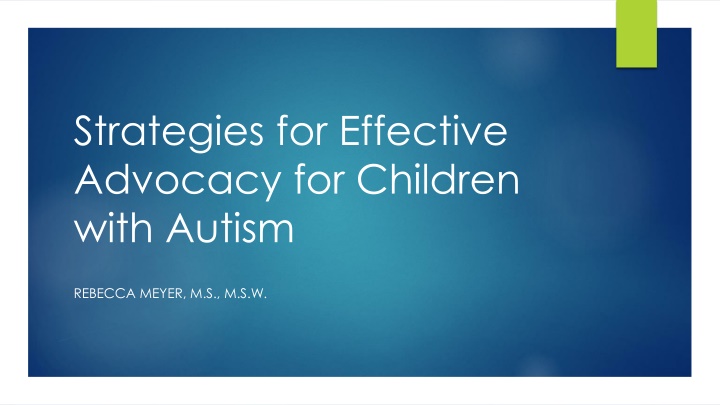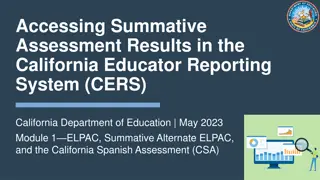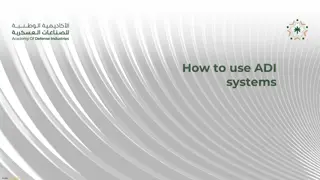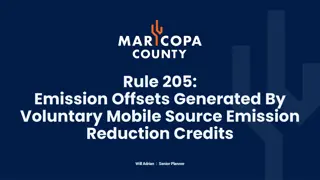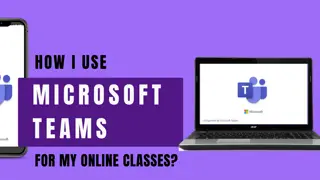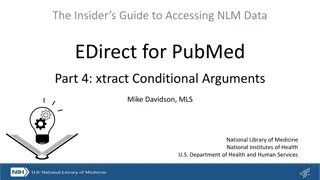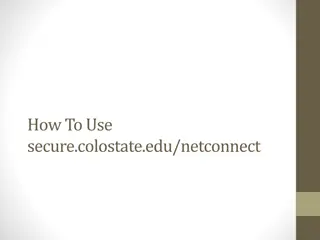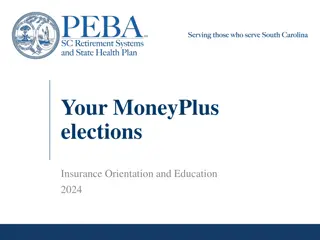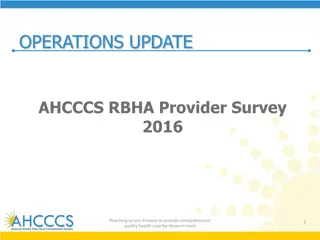Guide to Accessing My.Maricopa.edu Account
Step-by-step tutorial on how to request an official transcript from My.Maricopa.edu. Learn how to choose your institution, school, or college and proceed with the transcript request process. Follow the instructions on selecting the official transcript and completing the necessary steps to obtain your academic records efficiently.
Download Presentation

Please find below an Image/Link to download the presentation.
The content on the website is provided AS IS for your information and personal use only. It may not be sold, licensed, or shared on other websites without obtaining consent from the author.If you encounter any issues during the download, it is possible that the publisher has removed the file from their server.
You are allowed to download the files provided on this website for personal or commercial use, subject to the condition that they are used lawfully. All files are the property of their respective owners.
The content on the website is provided AS IS for your information and personal use only. It may not be sold, licensed, or shared on other websites without obtaining consent from the author.
E N D
Presentation Transcript
Strategies for Effective Advocacy for Children with Autism REBECCA MEYER, M.S., M.S.W.
2 Why is this Important?
3 What is Advocacy? The act or process of supporting a cause Advocacy in ASD literature is any action taken on behalf of a child with ASD to ensure adequate support, proper level of care, and basic human rights.
4 What is Collaboration? To work jointly with others In ASD, the complex symptomology and high rates of comorbid diagnoses, require treatment across a range of professional disciplines, and in a range of settings.
5 The Relationship Between Advocacy and Collaboration Collaborative Advocacy is an approach to advocating for children with disabilities that utilizes collaborative problem-solving skills and relationship-strengthening strategies to resolve disagreements. In short, we can better meet the needs of a person with ASD, when we work together.
6 Who is Involved? Multi-Disciplinary Team: -Parents and Caregivers -Group Homes/Residential Treatment Providers/After School Care -Medical Providers -Clinical Psychologists -Social Workers -Care Coordinators -Behavior Support -Special Education Teachers -TAs, CAs -SLPs, PT, OT Anyone can be an advocate and involved in collaboration Figure from Swiezy et al. (2008)
7 Benefits to Advocacy and Collaboration Professionals must blend a variety of strategies based on an individual s strengths, learning style, and needs Research shows: -enhanced problem solving -increased efficiency -access to additional resources -consistency in programming/intervention -better maintenance of acquired skills
8 Barriers to Successful Advocacy and Collaboration It is unrealistic to think that simply bringing professionals together in teams will lead to collaboration. With so many disciplines involved, differences arise Too many cooks in the kitchen D Amour et al. (2005)
9 Parent and Caregiver Perspectives He was the type of doctor who was patronizing you like he thought that everybody was like at this intellectual level and then he was here it was terrible, and he would not be open minded and he was just stuck in his run and there was no way to discuss it in a very free way. I m a very strong advocate and I ve kicked doors, but I had to work really hard I ve been yelling and screaming on the top of my lungs sometimes to get him where he is that s basically how we ve navigated through the system. (our son) has fell through the cracks many, many, many -too many times. I m my child s expert I ll take their advice if I think it s what s best and it fits for him.
10 Barriers to Advocacy for Caregivers -Economic Status -Education and Skills -Language barriers -Time commitment -Meeting are often scheduled last minute Because of all the different and contradictory advice they are getting, parents end up going from professional to professional, centre to centre, and from doctor to doctor, torn constantly between hope and despair. de Clercq and Peeters (2006)
11 Clinician Perspectives In a survey of over 300 behavioral professionals, 67% had not taken any courses or training on collaboration Other Factors: -Time -Knowledge -Service Availability -Organization Culture -High staff turnover -Large caseloads Many professionals are taught to function independently with our own terminology
12 Barriers to Advocacy for Clinicians Challenges with Clinician and Caregiver Communication: -awareness of how to help families navigate treatment options -perceived resistance from families -differences in caregiver and clinician perspectives -parent motivation -cultural differences -language differences
13 Breaking Down Barriers for Clinicians -Collaborative Communication: -Open communication and sharing information -Ongoing communication -Mutually understood language -Distinguished Roles: -Role delineation -Respect unique knowledge -Client centered care -Conflict resolution (address issues as they arise) -Professional flexibility -Collective ownership Bowman et al. (2021)
14 Breaking Down Barriers (Continued) -Communication with caregivers should be ongoing and frequent -Re-state caregivers questions and concerns -There is a tendency for clinicians to explain own interests and concerns, which do not always match caregiver priorities, so ensure everyone is heard -Balance objective information with empathy Parents have a difficult life, but professionals have a difficult job. -Normalize not knowing and asking for help -Having a point person, like a social worker or care Coordinator can help de Clercq and Peeters (2006)
15 General Tips for All -Importance of a solution focused approach -Find common goals -Do your research and ask questions -Less is more (be focused and concise) -Sometimes it s not personal -Don t let biases or assumptions get in the way -Watch tone and body language -Know when to walk away and try again -Know where to go for follow up
16 Questions?
17 The Summit Center Special Thank you to: -Gretchen Abdulla -Dineen Harvey -Ross Naber -Johanna Shaflucas
References: Bowman, K.S., Suarez, V.D., & Weiss, M.J. (2021). Standards for Interprofessional Collaboration in the Treatment of Individuals with Autism. Behavioral Analysis in Practice, 14: 1191-1208. D Amour, D., Ferrada-Videla, M., San Martin Rodriguez, L. & Beaulieu, M.D. (2005). The Conceptual Basis for Interprofessional Collaboration: Core Concepts and Theoretical Frameworks. Journal of Interprofessional Care, 19: 116-131. de Clercq, H., & Peeters, T. (2007). A partnership between parents and professionals. In J. M. P rez, M. Gonz lez, M. L. Com & C. Nieto (Eds.), New developments in autism: The future is today (pp. 310 340). London: Jessica Kingsley Publishers. Morris, R., Greenblatt, A., & Saini, M. (2019), Healthcare Providers Experiences with Autism: A Scoping Review. Journal of Autism and Developmental Disorders, 49: 2374-2388. Smith-Young, J., Chafe, R., Audas, R. & Gustafson, D.L. (2022). I Know How to Advocate : Parents Experiences in Advocating for Children and Youth Diagnosed with Autism Spectrum Disorder. Health Services Insights, 15: 1-11. Swiezy, N., Stuart, M. & Korzekwa, P. (2008). Bridging for Success in Autism: Training and Collaboration Across Medical, Educational, and Community Systems. Child and Adolescent Psychiatric Clinics of North America, 17: 907-922.
